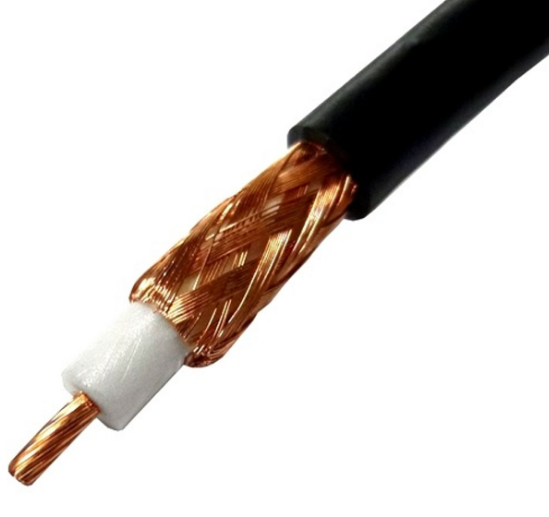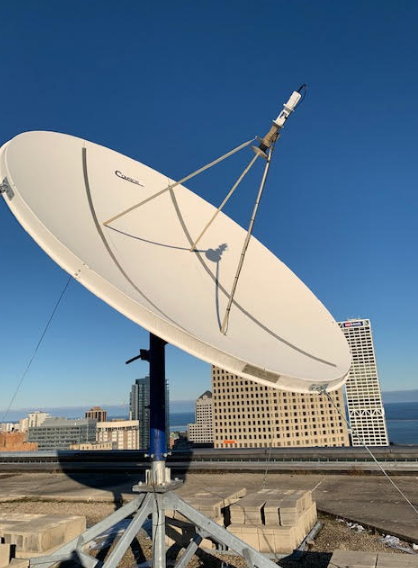The most common cause of failure in coaxial cables is physical damage, such as bending beyond the recommended radius, leading to a 40% increase in conductor breakage and significant signal loss.
Physical damage
Physical damage to coaxial cables often occurs in the inner conductors and outer insulation of the cable, especially during incorrect use and installation.
In a domestic or commercial environment, coaxial cable is excessively bent to the limit of its bending radius, and its internal conductors may be compressed, resulting in internal structural damage. The standard minimum bending radius of a coaxial cable is 10 times its diameter. Operations beyond this bending radius may cause the probability of breakage of the conductors inside the cable to increase to 40%, seriously affecting the signal quality.
Distortion of the cable during installation or daily use, especially near the joint, can cause poor connections, and poor connections caused by distortion may increase the risk of impedance mismatches within the cable system by about 20%.
Physical damage also includes squeezing, often when cables are squeezed against the edges or corners of furniture. Extrusion not only affects the cable housing but also causes permanent deformation of the inner conductor, and the transmission efficiency of the cable is reduced to 60% of the original.
High-quality cables on the market have better compression and distortion resistance, and high-end cable products use a reinforced outer material that can withstand a higher degree of physical pressure, and its pressure resistance can reach 1.5 times that of conventional cables.

Environmental factor
The main environmental factors include humidity, temperature change and ultraviolet (UV) radiation, and the impact of high humidity environment on coaxial cable is mainly reflected in material corrosion and insulation performance decline. When the relative humidity continues to exceed 75%, the conductor resistance of the coaxial cable may increase by more than 20%, which will lead to signal transmission interruption. Humidity also causes the insulation material of the cable to absorb water and expand, and the insulation resistance of the coaxial cable exposed to high humidity for a long time can be reduced to 70% of the original.
The influence of temperature on coaxial cable is mainly reflected in the phenomenon of thermal expansion and cold contraction. Under extreme low temperature conditions, the cable insulation material may become brittle and hard, which is easy to break. High temperatures may cause the insulation material to soften or melt. For every 10°C increase in temperature, the mechanical strength of the cable material may decrease by 5% to 10%.
The damage of UV to coaxial cable is mainly reflected in the aging and embrittlement of the outer sheath material. UV radiation can break the polymer chain in the cable sheath, causing the material to lose elasticity and fade in color. After 3 months of continuous UV exposure, the tensile strength of the cable sheath may decrease by 30%, which directly reduces the cable’s resistance to environmental stress and increases the risk of cracks and breaks.

corrosion
The corrosion problem of coaxial cable mainly occurs in the metal part of the cable, especially in wet or chemical environments. Corrosion not only affects the physical structure of the cable, but also seriously damages its electrical performance
When the metal parts of the coaxial cable come into contact with water molecules, an electrochemical reaction occurs, resulting in the gradual dissolution of metal ions. In coastal areas or high humidity environments, the corrosion rate of the copper conductor of the cable is more than three times faster than that of the dry environment. This corrosion can increase the resistance of the cable, and the resistance of a coaxial cable working in a high humidity environment for a year may increase by 10% to 15%.
Pitting is a locally severe form of corrosion that occurs in salty or acidic atmospheres. Pitting corrosion can cause serious damage to the conductor inside the cable, which affects the integrity of signal transmission. Pitting can result in a 20% reduction in cable area, which reduces signal transmission capacity by about 30%.
The corrosion process can be effectively slowed by using materials with better corrosion resistance such as stainless steel or galvanized coating materials, which can provide sacrificial cathodic protection for copper conductors to extend the service life of the cable.
Installing anti-corrosion coating on coaxial cable is an effective way to prevent corrosion. The use of plastic materials such as polyethylene or polyvinyl chloride (PVC) as outer sheathing can block the invasion of moisture and chemicals. Special chemical anti-corrosion coatings such as epoxy resins are used to provide greater chemical stability and durability. In environments where there is a risk of corrosion, the appearance and electrical performance of the cable should be checked every 3 to 6 months.
Aging and wear
The aging and wear of coaxial cable are mainly caused by the combination of long-term use and environmental factors. The plastic and rubber materials used in coaxial cables undergo chemical structural changes such as oxidation and cross-linking reactions over time. These changes harden and embrittlement the material, reducing its elasticity and resistance to pressure. After more than 5 years of use of coaxial cable, the elasticity of its outer sheath may be reduced by 40%.
Working in a high temperature environment for a long time, the insulation material of coaxial cable will accelerate aging, and the insulation resistance of the insulation material in the continuous exposure to 70°C environment may decrease by 30% within a year, seriously affecting the safety and performance of the cable.
Causes and effects of wear:
Mechanical wear: Coaxial cable in the installation or use process, because of friction, extrusion and other physical effects caused by surface wear. For coaxial cables used in frequently moving environments, the thickness of the outer sheath may be reduced by 0.1 mm per year, and this wear directly affects the protection ability and service life of the cable.
Environmental wear: sand, chemical corrosion and other environmental factors will also accelerate the wear of coaxial cable. In areas where dust storms occur frequently, the cable surface may be accelerated by the effect of wind and sand, and the cable used in such environments has a surface wear rate three times that of ordinary environments.






